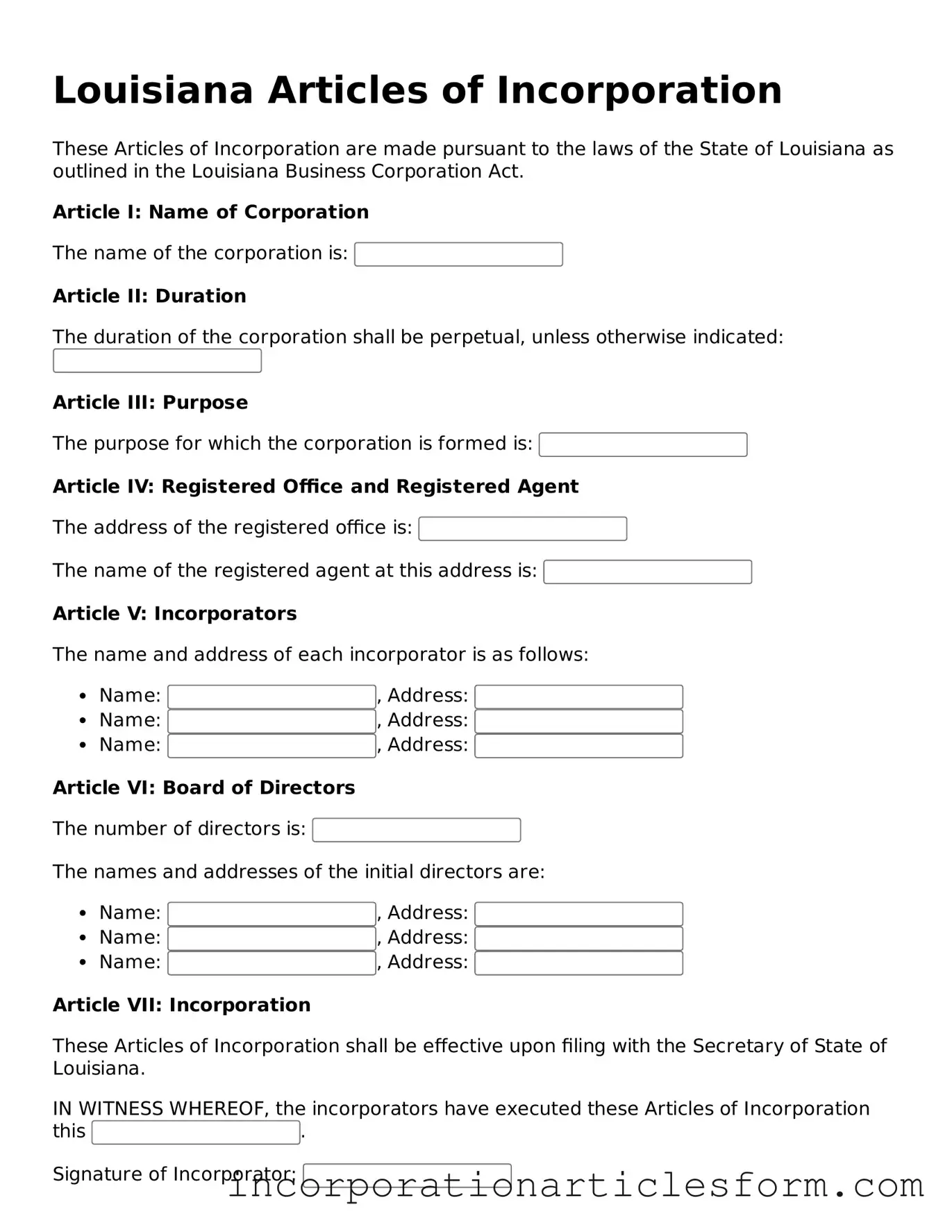The Articles of Organization is a document used by limited liability companies (LLCs) to establish their existence in a particular state. Similar to the Articles of Incorporation, it requires basic information such as the company name, address, and the names of its members. Both documents serve to formally register a business entity with the state, providing a legal framework for operation and liability protection for its owners.
The Certificate of Formation is another document closely related to the Articles of Incorporation. It is often used interchangeably with Articles of Incorporation in various jurisdictions. This document outlines the basic details of a corporation, including its purpose, registered agent, and the number of shares authorized. Like the Articles of Incorporation, it is essential for legal recognition and compliance with state laws.
The Bylaws of a corporation detail the internal rules and procedures governing its operations. While the Articles of Incorporation focus on the entity's creation, Bylaws provide guidance on how the corporation will be managed, including the roles of officers, the process for holding meetings, and voting procedures. Both documents are essential for establishing a corporation's legal framework but serve different functions.
The Operating Agreement is similar to Bylaws but is specifically used for LLCs. This document outlines the management structure, member responsibilities, and operational procedures. It serves as a blueprint for the LLC's internal workings, similar to how Bylaws function for corporations. Both documents help clarify the governance of the entity and protect the interests of its members.
The Partnership Agreement is a document that outlines the terms and conditions of a partnership. Like the Articles of Incorporation, it establishes the legal framework for the business, detailing each partner's contributions, responsibilities, and profit-sharing arrangements. Both documents serve to formalize business relationships and provide a clear understanding of each party's role.
The Certificate of Good Standing is a document that confirms a corporation or LLC is legally registered and compliant with state regulations. While it does not create the entity like the Articles of Incorporation, it serves as proof of the entity's existence and compliance. This document is often required for various business transactions, similar to how Articles of Incorporation are necessary for initial registration.
The Statement of Information is a document that corporations and LLCs must file periodically to update the state on their business activities. This document includes information about the entity's address, officers, and registered agent. While the Articles of Incorporation establish the entity, the Statement of Information ensures that the state has current data about the business's operations.
The Business License Application is a form that businesses must submit to obtain the necessary permits to operate legally. Similar to the Articles of Incorporation, this application requires specific information about the business, such as its name, address, and type of services offered. Both documents are critical for ensuring that a business complies with local regulations.
The Trademark Application is a document used to register a trademark with the United States Patent and Trademark Office (USPTO). While it serves a different purpose than the Articles of Incorporation, both documents are essential for protecting a business's identity and brand. The Articles of Incorporation establish the business as a legal entity, while the Trademark Application safeguards its intellectual property.
The Shareholder Agreement is a document that outlines the rights and responsibilities of shareholders in a corporation. It complements the Articles of Incorporation by providing detailed rules on share ownership, voting rights, and the process for transferring shares. Both documents are crucial for defining the relationship between the corporation and its owners.
